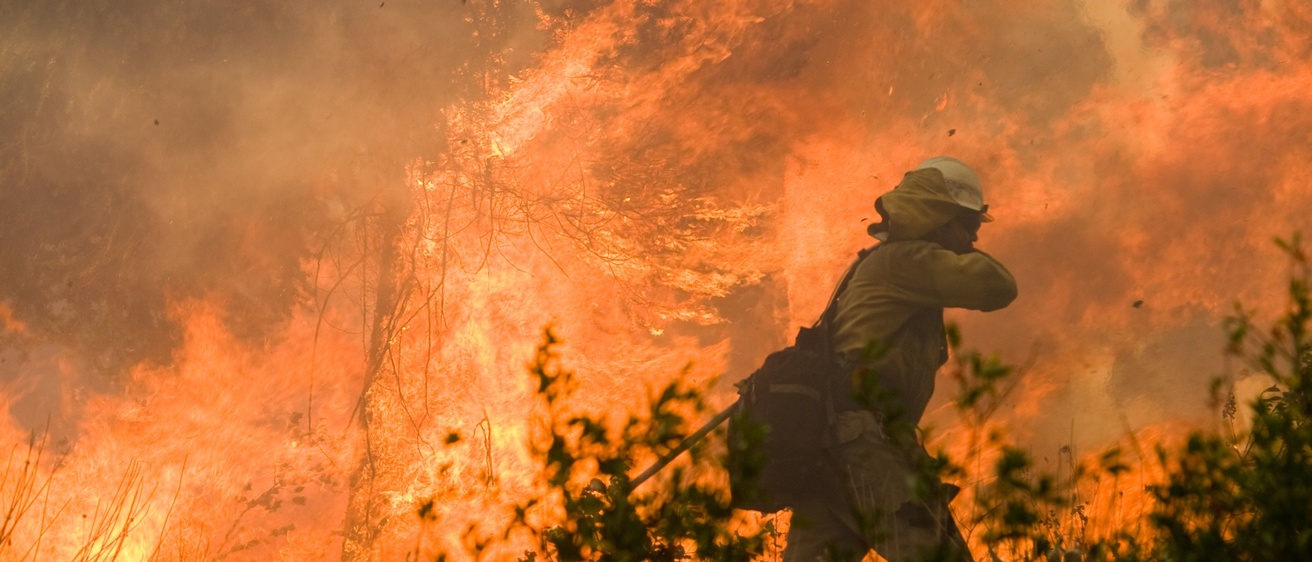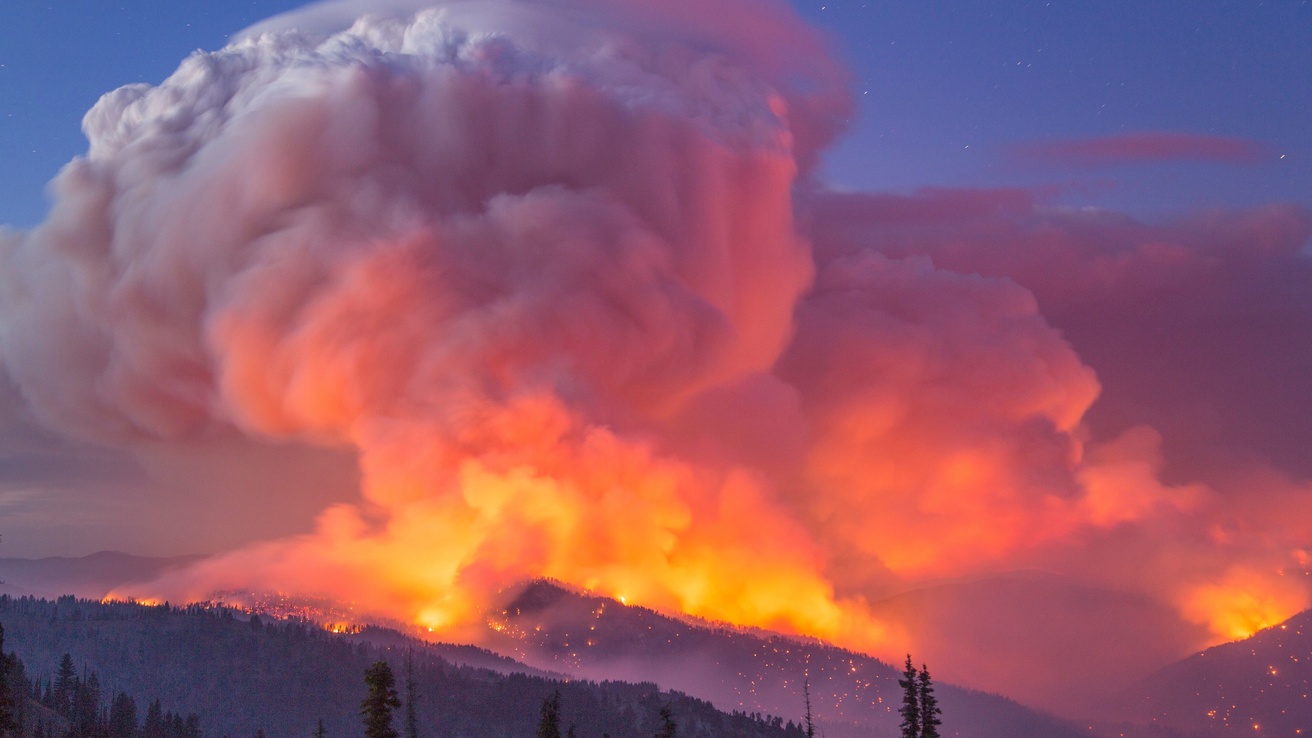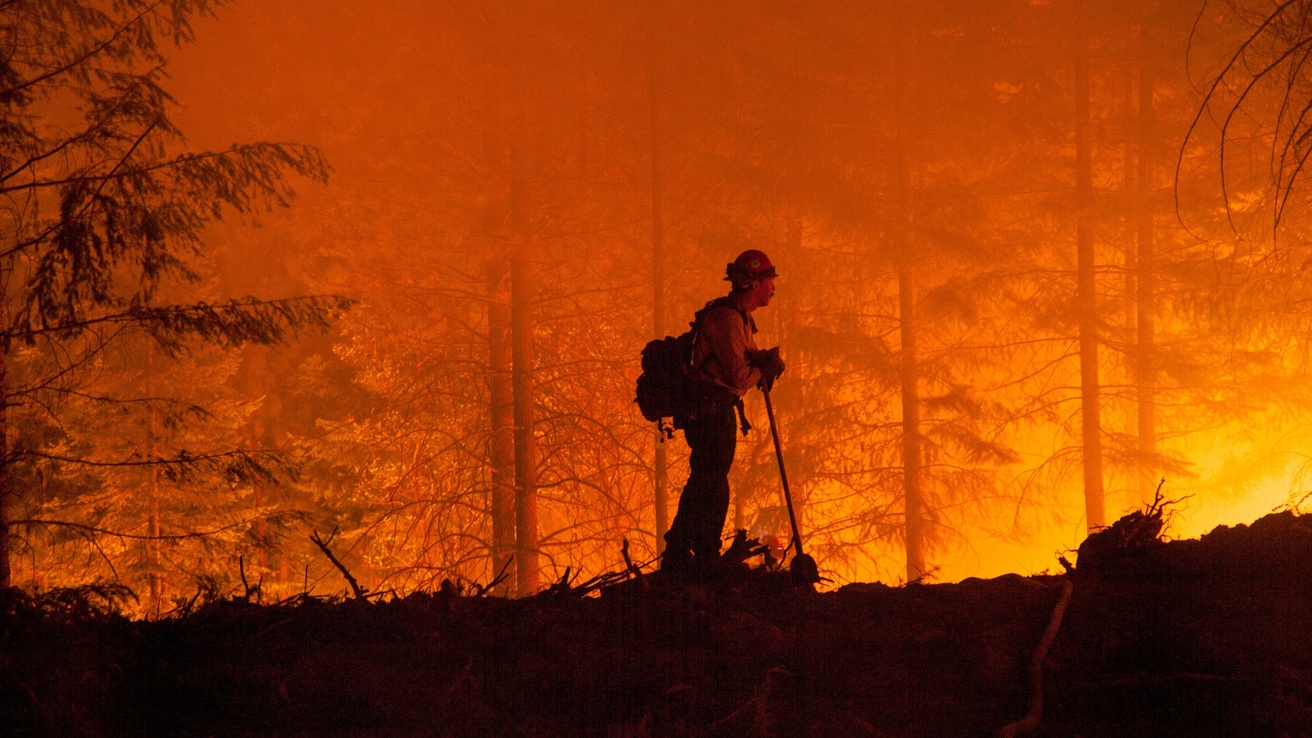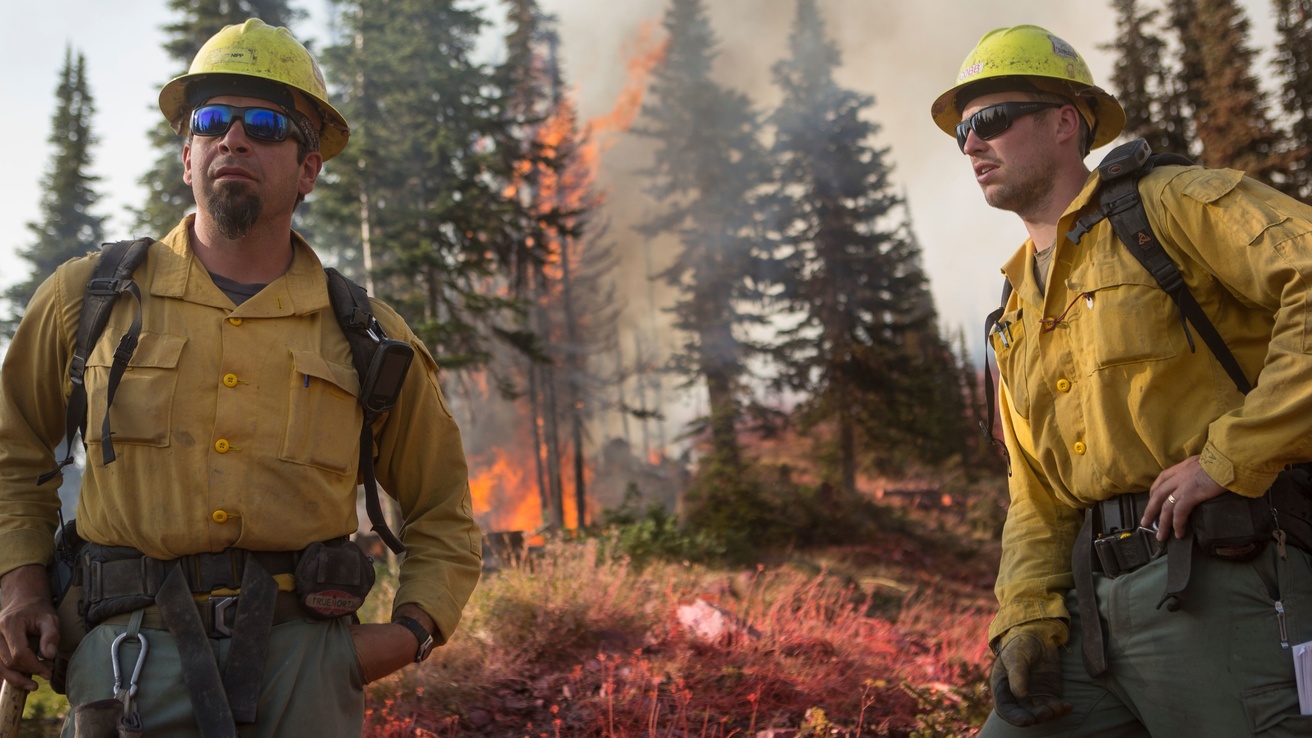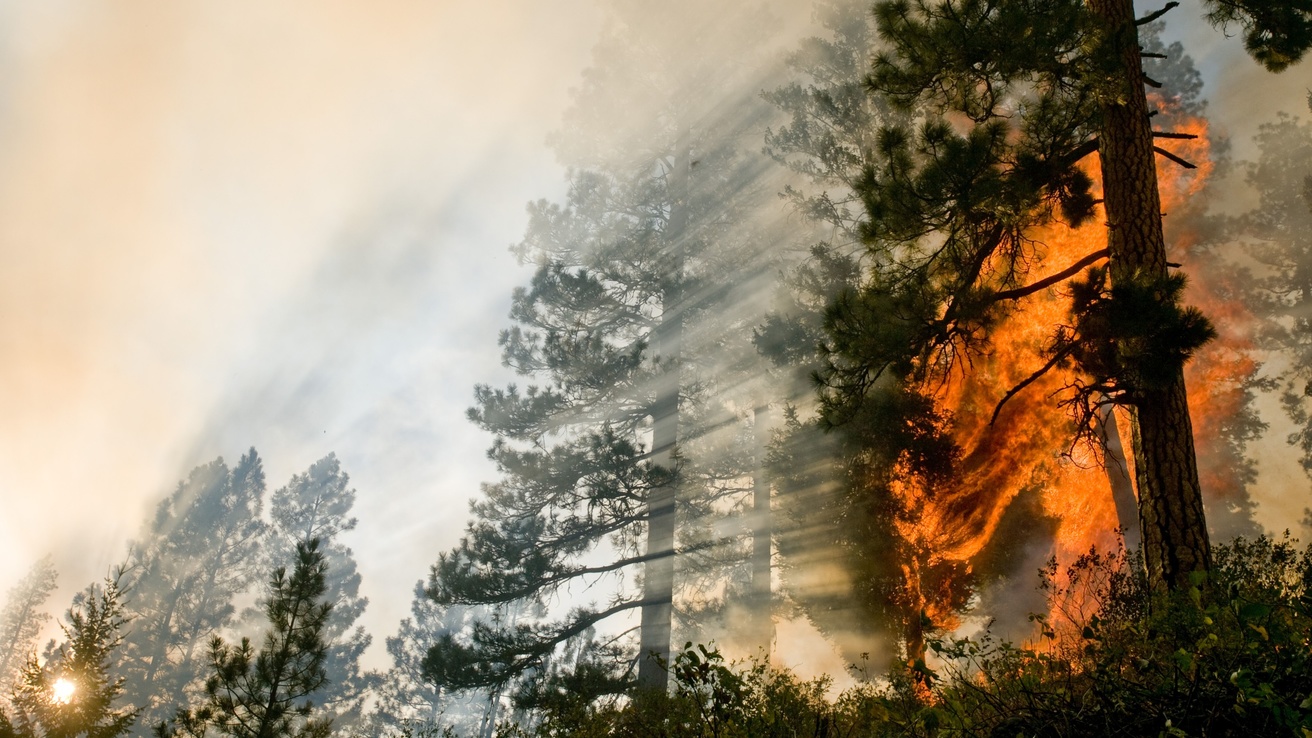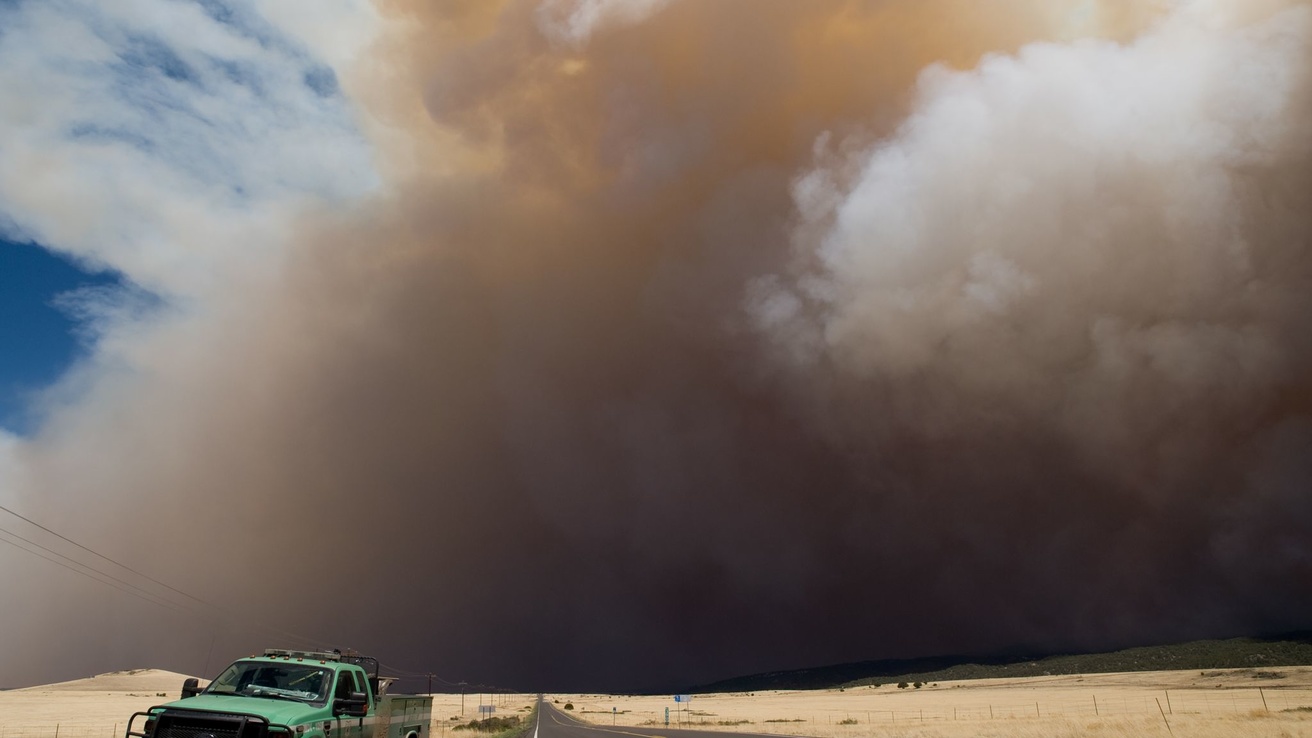The Wildfire Photography of Kari Greer
January 17 - May 10, 2024
Old Capitol Museum
Hanson Humanities Gallery (ground floor)
The Pentacrest Museums are delighted to bring Facing the Inferno: The Wildlife Photography of Kari Greer to the University of Iowa campus in 2024. To be displayed in the Hanson Humanities Gallery at the Old Capitol Museum, this exhibition is timely, important, and has incredible curricular relevancy across many subjects from fine art and journalism to public health and beyond. Greer's images take center stage with context from scientists and other experts.
"As our summer skies progress from azure blue through hazy tones—impossible to ignore—the increasing length and severity of fire seasons makes this exhibition timely and important."
-The Prichard Art Gallery
Kari Greer is a contract photographer with the National Interagency Fire Center based in Boise, Idaho. Kari specializes in wildland fire photography and editorial photojournalism. Her interest in wildland fire photography was sparked during her college years, working on a Forest Service fire crew on the Gifford-Pinchot National Forest in Washington. Her work has appeared in numerous publications including Outside Magazine, National Geographic Adventure, Wildland Firefighter, and The New York Times. Kari has an online video interview in Yahoo Studios for The Weekly Flickr as well on CNN. Kari studied photography at California State University, Sacramento and spent time in a workshop with Mary Ellen Mark, collaborating with Icelandic Photographer Erla Stefánsdóttir and National Geographic photographer Brooks Walker.
Image Gallery
more
Fire Photography as Fine Art
Contemporary Technology has changed image-making and publishing. Today's cameras allow for greater speed and details. They capture split-second movement, blasting the eye with swirling colors of flame and smoke. Photography can now enter the movement of the fire. With no limits on the number of photographs taken, after the fact curation replaces on-site composition, further encouraged by digital editing software. With the advent of drones and remote cameras, we don't even need an on-the-scene photographer to record events. It's an era of inexhaustible images.
The role of the contemporary fire photographer is no longer simply to record but to interpret, to invest a sensitivity that we call art.
The truly striking endurance of today's photos are not those filled with the most gargantuan flames but with an artful arranging of the fire or smoke plume or people in ways that engance understanding and emotional connection. These images convey meaning through the aesthetic pleasure of seeing something thought familiar with fresh eyes. This is fire photography as fine art.
Get your students out of classrooms and textbooks, and into our gallery for high-impact learning.
For Instructors:
more
CURRICULAR CONNECTIONS
This powerful and multidimensional educational and supports the teaching goals and objectives of instructors at the University of Iowa and beyond. Our team has identified direct instructional linkages to the following subjects (not limited to):
- Photography and Environmental Science: To examine ecological impact, air quality, and long-term consequences of wildfires, drawing on both visual evidence and scientific research.
- Communication & Media: Examine the role of media in shaping public perception of wildfires. Students can analyze news coverage, social media narratives, and government communication strategies during wildfire events.
- History & Geography: Research specific historical wildfire event from the exhibit and create a timeline that includes the fire’s progression and impact on affected region. Students can also provide a geographical analysis of the area, highlighting factors that contributed to the fire and fire behavior/progression.
- Sociology and Psychology: Explore the social and psychological aspects of wildfires by investigating the human response to wildfires and the impact on affected communities. Examine the role of media and public perception in shaping responses to wildfires (ex. News media, journalism, film)
- Public Policy & Political Science: Assign students to analyze policies and regulations related to wildfire management and prevention. Assess the role of federal and state governments, as well as advocacy groups in influencing wildfire policies.
- Engineering & Technology: Challenge students to design innovative technology or solutions that can aid in wildfire prevention, monitoring, communication, containment, safety and support. Do a comparative analysis of existing technologies and applications and/or build in time to examine the progression of warning systems, firefighting strategies and equipment over time from its earliest accounts. (Indigenous, London fires of 1666, Chicago fire, Canyon fires, other)
- Teaching & Learning: Students examine the exhibit and draw inspiration to design their own curriculum plan with subject matter lesson plans and learning activities related to exhibit themes, ideas, and content. Students can focus on a K-3, 5-8, and 9 -12 curriculum with a cross disciplinary approach. Students can conduct user testing for in-gallery activities to evaluate their lesson plan goals and objectives.
- Health Sciences & Medicine: Investigate the health implication of wildfires and living with smoke, mental health and medical response focusing on preventative measures and health care support.
- Economics & Business: Analyze the economic impact of wildfires on local economies including cost of fire management and firefighting efforts, property damage and industrial impact (agriculture and tourism). Students can propose strategies for economic recovery and resilience.
- Creative Writing & Literature: Encourage students to create a piece of creative writing inspired by the emotions and experiences conveyed through Greer’s photography. Written poems, short stories, haiku’s, or essays that explore themes related to wildfires and the human relationship to fires.
- Visual Art, Design, and Art History: Students can investigate the artists inspiration and influence for capturing wildfires. Assess and compared to artistic periods, styles, methods of making, etc. Students can be challenged to create their own artwork or visual representations that reflect their understanding of wildfires or themes that connect in some way with Greer’s photographs (composition, lighting, other) Paintings, digital art, sculptures can be created from the exhibit.
- Ethics & Philosophy: Engage students in a philosophical discussion about the ethics of fire management and prevention. They can explore questions related to controlled burns, resource allocation, and the moral obligations of society in preventing wildfires:
- Public Safety and Emergency Management: students with developing an emergency response plan for a wildfire-prone area. They should consider evacuations, communication strategies, and healthcare support in their plans.
UI staff & faculty: Please join us for a brief Zoom on Wednesday, November 29, 2023, 12:30 - 1:00 p.m. as we share more about this exhibition and how the Pentacrest Museums can support your curriculum. https://events.uiowa.edu/83107
ASSIGNMENT DEVELOPMENT
This exhibition will help to illustrate your curriculum. If you'd like support designing an assignment or educational connections, we'd be happy to help. Themes, discussion questions, or ideas for how to engage students in our spaces are things we can offer.
See examples of discussion questions designed for a previous class:
Physics Related Class Prompts (Major specific)
Prompts to assist students in a college physics class exploring principles of physics involved in wildfires and their broader implications of the environment and society.
Heat & Combustion: Students examine the photos and discuss the physics of heat and combustion. How do wildfires demonstrate the principles of thermal energy transfer?
Ignition and Fire Behavior: Students consider the ignition sources and behavior of wildfires depicted in the photos. What physical factors contribute to the spread and intensity of a wildfire.
Fire Behavior and Community Impact: Examine the Greer’s photo of the “First Creek Fire” in Lake Chelan, Washington, August 2015. What about this photo speaks to wildfire management, safety practices, and community response communication.
Energy Transfer: Select a photo that best describes the behavior of wildfires and what physical factors are best represented to demonstrate the spread and intensity of a wildfire? Do the fires depict a natural process or man-made occurrence.
Wind Dynamics: Have students analyze the role of wind dynamics in Greer’s photographs. What photographs point to movement and behavior of air?
Natural vs Controlled Burns: Discuss the physics of controlled burns and how they differ from uncontrolled wildfires. What principles guide these practices. Point out which photos serve to delineate differences.
Climate & Wildfires: Consider the connection between the frequency and intensity of wildfires as it relates to weather conditions. How do physics and environmental factors intersect in this context?
Smoke Generation and Fire Modeling: Introduce the concept of fire modeling and ask students to consider how physics is used to predict the behavior of wildfires and plan responses.
Historic Examination: Explore the evolution of land and fire management. What practices from our past have impacted the way we approach fire and land management today. What examples in history have changed and advanced the understanding of the physics of wildfires and forestry management. (note: this question could also relate to history and culture)
Additional Interpretive Prompts (Major Specific, Rhetoric, or First Year Seminar)
- Emotion & Mood: Ask viewers how the photos make them feel. What emotions to the images evoke?
- Storytelling: Encourage the audience to create a narrative or story behind an image of their choice. What do they think is happening in each photo? Share the story with a peer who also chose the same object, what similarities or differences does each story offer.
- Composition & Technique: Prompt viewers to discuss the composition of the photos. What about the photos speak to the photographer’s point of view (angles, framing, use of light and color?)
- Subject & Theme: Have your audience consider the subjects of the photos. Do the images follow a particular theme or concept? What concepts or visual imagery connect the body of work as a whole?
- Favorite and Least Favorite: As viewers to identify their favorite and least favorite photos in the gallery and explain the reasons behind their choices.
- Cultural & Historical Context: Encourage viewers to explore if there are any cultural or historical references in the images.
- Personal Connection: Ask if any of the photos trigger personal or familiar memories or experiences for the viewers.
- Artistic Interpretation: Prompt viewers to share their artistic interpretations of the photos. What symbolism or metaphors do they see? Are there other artists or artistic styles that the work reminds the viewer of.
- Comparisons: Suggest comparing and contrasting different photos in the gallery. What similarities or differences do they notice?
Photographic Analysis Educational Prompts (Course Specific- Visual Arts)
Begin by spending two or three minutes looking at the photography of Kari Greer. Choose one work that sparks your curiosity or interest.
- Quickly drawing the basic lines, shapes, and forms of the composition in order to understand its careful geometry before proceeding to a class-wide analysis and discussion. Students might be asked, “Why do you think Greer framed the subject in this way? Kari Greer’s photographs can invite personal reflection or open discussion how the camera’s framing changes our perception of reality.
- When comparing Kari Greer’s photographs subject and photographic approach, what other artists come to mind?
- In what ways do you see Greer’s work balancing the camera’s capacity for documentation with its aesthetic possibilities in order to convey a variety of social and cultural messages. What messages stand out for you. Share with a class peer.
- Are there any technical questions about the photography, such as camera equipment use or post processing techniques.
K-12 CORE CURRICULUM
CLASS VISITS
Our staff is here to schedule a visit for your class in our free-admission museum to see the exhibition. There are several ways to do this:
- Schedule a self-guided visit as a class and use our gallery as your classroom for a day.
- Schedule a guided visit as a class. Our Director of Education and Engagement can support with development of discussion questions or educational connections.
- Assign a visit to the exhibition for your students outside of class during our open hours. We can take attendance at the front desk.
STAFF & FACULTY:
There are currently no events to display.
